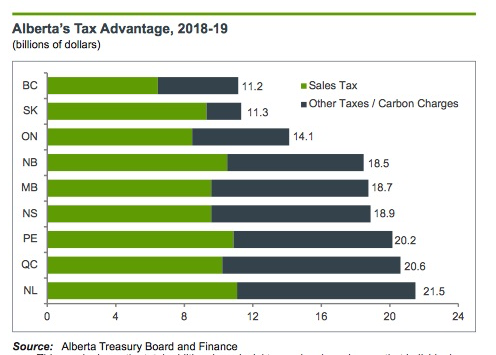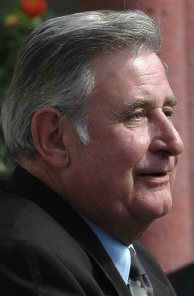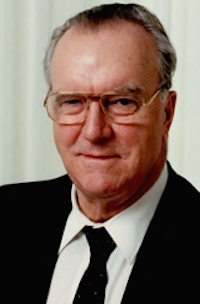“When the global price of oil collapsed and the recession hit, we had a choice: Cut or build. We chose to build. In making that choice, we focused on the priorities of regular people and families – creating badly needed jobs, building our province for the future, making life more affordable for people and protecting the schools, hospitals and public services all Albertans rely on.”
It was with this familiar refrain that Finance Minister Joe Ceci began his speech on the floor of the Legislatve Assembly as he introduced the Alberta Government’s 2018/2019 budget. This was Ceci’s fourth budget since the NDP were swept into office in the 2015 provincial election and this is likely the last governing budget from this government before next year’s provincial election is called.
This year’s budget appears to have avoided the “compassionate belt tightening” that Premier Rachel Notley warned about in her 2017 year-end interviews. The NDP has avoided making significant cuts to public services over the past three years, instead opting for stable increases to operations funding and major investment in capital spending.
Titled “A Recovery Built to Last,” the themes of this budget – a path to a balance budget, jobs and diversification, protecting public services – are key to the narrative the NDP hopes to shape between now and next spring’s election.
This budget’s narrative also provides a contrast between the NDP and what many expect would be a much different budget implemented under a government led by United Conservative Party leader Jason Kenney, which might be expected to impose deep cuts to funding for public services, education and health care.
Welcome to pre-election season.
Overall, it was a generally acceptable budget, but it is difficult to get too excited about it.
With government prone to make major changes to budgets over the course of a year, it is hard not to see the Budget Day pomp and ceremony as just an overrated exercise in expectations management.
 Ceci said in his speech that the NDP are projected to balance the provincial budget by the 2023/2024 fiscal year, which would coincide with the end of a second NDP term in government.
Ceci said in his speech that the NDP are projected to balance the provincial budget by the 2023/2024 fiscal year, which would coincide with the end of a second NDP term in government.
The current deficit is forecast to be $8.8 billion, which is $1.5 billion less than was initially forecast. The government will be lambasted for taking on more debt, even though significant debt accumulation was already forecast in the media coverage of last year’s budget. Economists will be quick to point out that the Alberta government is still in a fairly strong position when it comes to the net debt to GDP ratio, but that message might be hard to sell to newspaper opinion writers and voters at the doorsteps.
But what is not clear in this budget is how the government plans to deal with its revenue problem.
Only in Alberta could a finance minister calmly deliver a speech about an $8.8 billion budget deficit while also bragging about the lowest taxes in the country. “…Albertans and Alberta businesses pay at least $11.2 billion less in taxes than they would in any other province,” Ceci stated. Maybe if we paid a little bit more taxes, we could have a balanced budget, or at least a lower deficit?
Economists and political staffers might tell me it’s not that easy, and maybe it’s not, but only in Alberta could huge deficits and low taxes be totally reconcilable in reality but completely irreconcilable in politics.
What’s in a budget name?
The titles of Alberta’s budget documents typically present a general theme. Budget names can sometimes be quite silly, but they do provide a snapshot of the political and economic agenda of the government of the day. Here is a look back at titles of Alberta budgets from 1997 to 2018:
- A Recovery Built to Last (March 22, 2018)
- Working to Make Life Better (March 16, 2017)
- Alberta Jobs Plan (April 14, 2016)
- Supporting Jobs, Supporting Families (October 27, 2015)
- Budget 2015 (March 26, 2015)
- The Building Alberta Plan (March 6, 2014)
- Responsible Change (March 7, 2013)
- Investing in People (February 9, 2012)
- Building a Better Alberta (February 24, 2011)
- Striking the Right Balance (February 9, 2010)
- Building On Our Strength (April 7, 2009)
- The Right Plan for Today and Tomorrow (April 22, 2008)
- Managing Our Growth (April 19, 2007)
- Strengthening Today, Securing Tomorrow (March 22, 2006)
- Investing in the Next Alberta (April 13, 2005)
- On Route, On Course – Heading Toward Alberta’s Second Century (March 24, 2004)
- Making Alberta Even Better (April 8, 2003)
- The Right Decisions for Challenging Times (March 19, 2002)
- The Future … Meeting Priorities, Sharing Benefits (April 24, 2001)
- New Century. Bold Plans. (February 24, 2000)
- The Right Balance (March 11, 1999)
- Agenda for Opportunity (February 12, 1998)
- Building Alberta Together (February 11, 1997)




